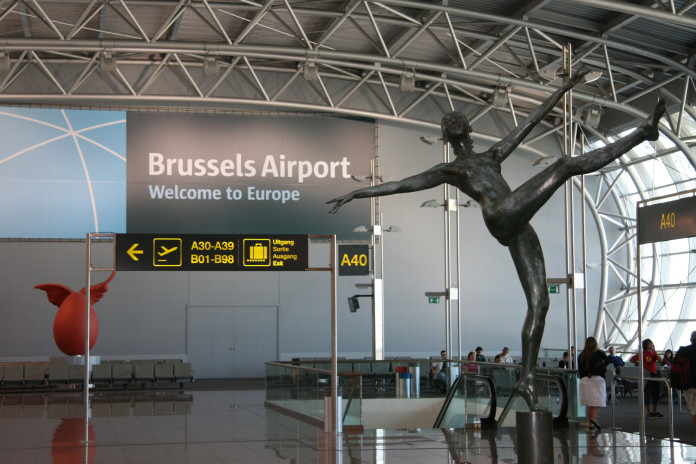

The terrorist attacks at Brussels Airport on 22 March had a huge impact, but the airport is recovering and getting back to its growth path.
There was little disruption to freighters, which were only stopped for 24 hours before getting back to normal, but bellyhold cargo took a significant hit.
The gateway’s head of cargo, Steven Polmans explains: “On 22 March, we had the attack, which had a dramatic effect on our traffic for a few weeks. As of May however, we see again growth in our cargo volumes compared to last year, so very difficult to compare to our expectations and targets.
“All together, after two years of very solid growth, we do want to grow again this year. Despite the difficult start we encountered, we are confident we will manage to get this result.”
The first four months of 2016, Brussels handled 148,491 tonnes, down on the 161,221 tonnes for the same period in 2015, a 7.9 per cent fall with bellyhold traffic down 16.6 per cent.
Polmans says bellyhold will take time to recover from the attacks and he is not expecting growth for now, but once airlines and passengers see things are back to normal, this will pick up. On the freighter side, he is more optimistic: “Freighter business is doing good, with more routes and airlines expected. We would like to add at least one additional full cargo carrier to our customer base and open some additional frequencies and new routes this year. For the moment we are confident this will materialise as planned.”
A major boost came with the return of Ethiopian Cargo and Polmans welcomed the carrier back with open arms: “Ethiopian is very important to us, and since the restart early April, they already managed to become our largest cargo carrier.
“Not only because we can continue our growth and show our expertise when it comes to flower handling, but also as it helps our forwarders to strengthen their BRUcargo operation and setup. The support of the forwarders has been crucial and very important in the decision for Ethiopian to return to Brussels.”
He says the buoyant trade lanes are imports and exports to South East Asia, exports to Africa and imports from North America. Since the beginning of 2016, a new application in its cloud community platform, giving detailed and valuable data on all trade lanes, the evolution and commodities is helping business. Polmans says it has given more transparency and knowledge, helping it further strengthen its growth.
He notes: “We see growth in most segments, but especially the perishables business on the import side and the pharma on export side are performing far above average. As both of them are key in our strategy, we will continue to focus on them without ignoring all the rest.”
Meanwhile, the Air Cargo Belgium organisation launched on 19 April has made strides and Polmans says it has created 11 working groups from e-freight and pharma to security and training, noting: “In all these fields we will work together with all stakeholders to set up, modify or implement procedures or initiatives. The enthusiasm of all participants has given the organisation already a head start, so the expectations are high.”
But the European market is a concern for Polmans, as he says in the last few years it has been struggling to show some sustainable and long-term growth and figures are flat or even negative, noting every good month is followed by two bad months.
He observes: “That is an issue for all of us in Europe and makes us all fight harder for the same size of market. Belgium is keeping up, partially thanks to the good location in the economical heart, the so-called blue banana, in Europe. But the economical state of Europe is and should be a concern to all of us.”
The biggest challenge is finding a good balance and maximising the benefits of being a passenger and freighter airport and another issue is the environment. Polmans says environmental awareness is high all over Europe and this will “not go away”.
In the rest of 2016, the target is to continue growth, despite the Q1 results, but other projects are running. Polmans says: “We continue to invest in real estate, both on the first line and second line. The new sorting facility of DHL being erected is a good example.
“On pharma we are not sitting still. Together with the community, we are taking further initiatives and implementing new things such as our cool dolly.
“This year we will get our cloud platform very visible, up and running for all stakeholders, when later this year our first applications will go live. This will be the start of our digitalisation program we started two years ago and will be key in reshaping how we work and in our industry. I am convinced in future, when looking back, this will be one of the big accomplishments in transforming the way we handle cargo at the airport.”













